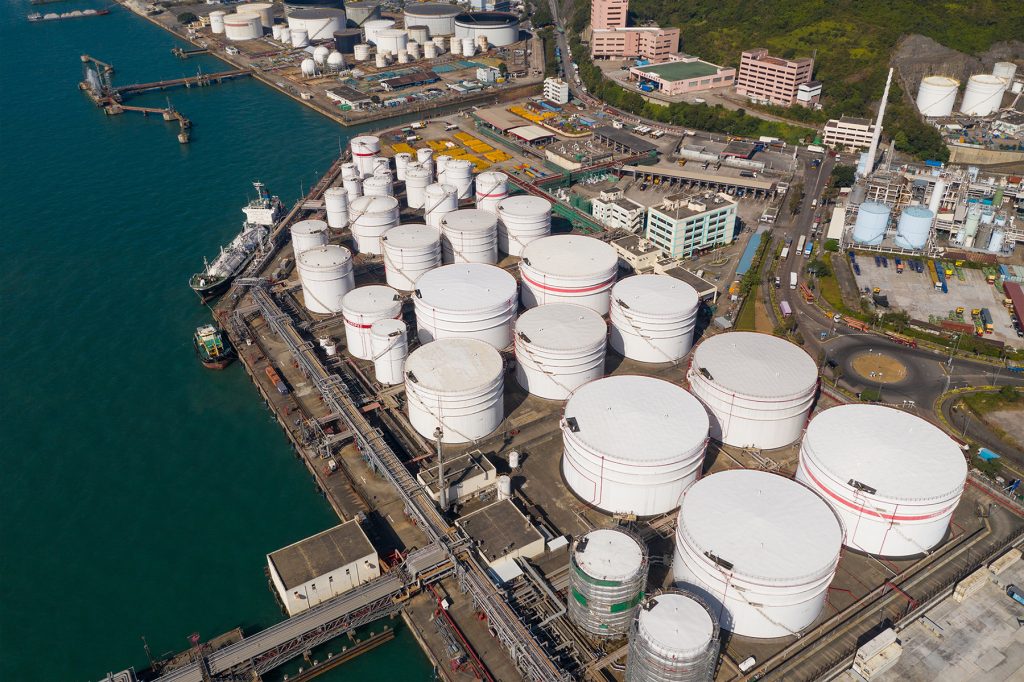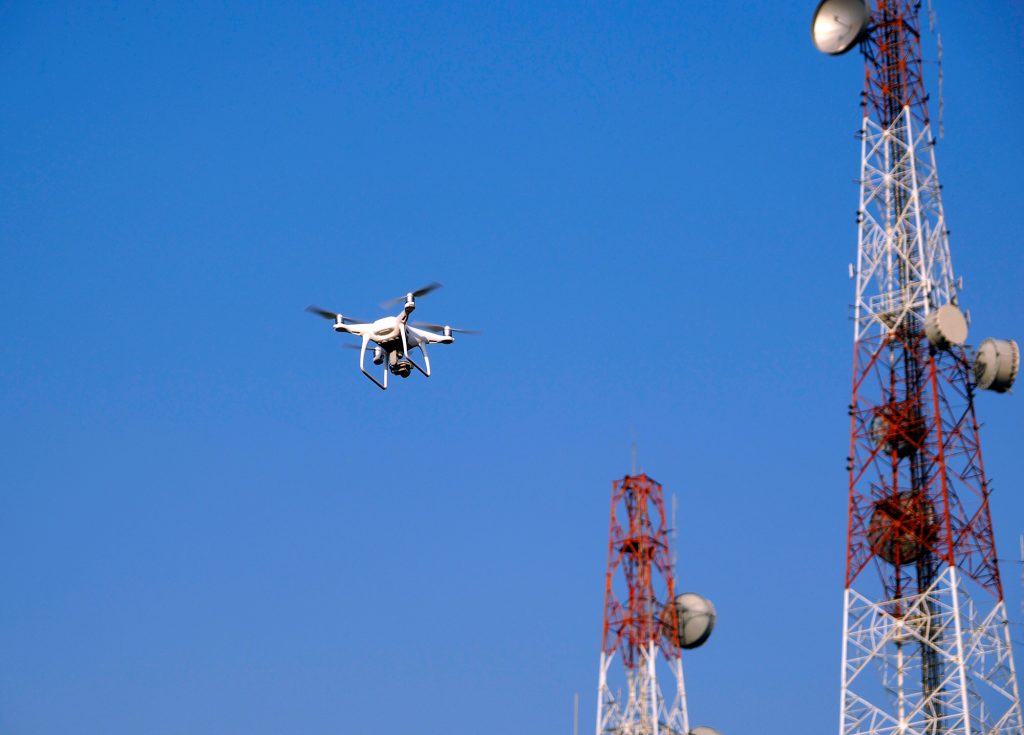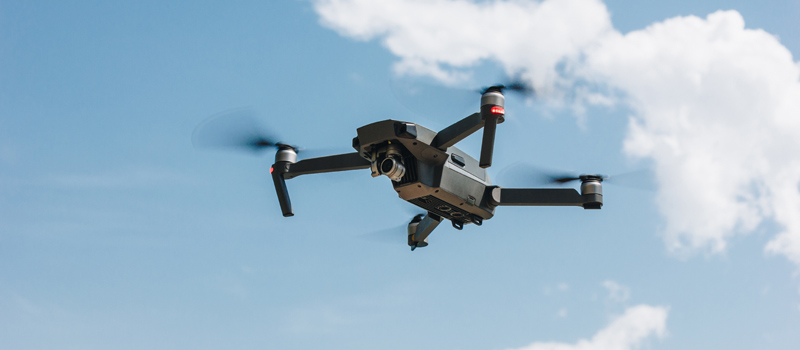Note: This article does not provide legal advice and it may be inaccurate or incomplete. It’s for informational purposes only and it’s generally not a good idea to fly around critical infrastructure without doing in-depth research
Drones are small and mobile enough to fly just about anywhere. This is one of their biggest strengths but is also one of the reasons why drone use has to be regulated.
In this article, we’ll be talking about one of the most important sub-topics in drone regulation – flight near critical infrastructure. What is considered critical infrastructure and how closely are drones allowed to fly near them? What are the laws relevant to drone flight near critical infrastructure and what penalties will a violating drone pilot face? Is there any way for a drone pilot to fly near critical infrastructure?
What is considered critical infrastructure?
Several authorities in the US provide definitions of what constitutes critical infrastructure. Despite minor differences between these definitions, they all pretty much overlap with each other. Broadly speaking, any facility that is essential to the security, national economy, or national public health and safety is considered part of critical infrastructure.
The Cybersecurity and Infrastructure Agency (CISA) provides what is probably the most comprehensive list of categories of infrastructure that are considered critical. The categories (along with some examples) are as follows:
- Chemical sector – Chemical manufacturing plants including basic and specialty chemicals, pharmaceuticals, agricultural chemicals, and consumer products.
- Commercial facilities – Sites that draw large crowds of people such as amusement parks, hotels, arenas, retail centers, and fairgrounds.
- Communications sector – Facilities of satellite, wirelines, or wireless communications providers including their offices and cellular towers.
- Critical manufacturing – The facilities of manufacturing industries that could disrupt essential functions at the national level should they stop operations. These include the facilities that manufacture parts for electronics, automobiles, transportation, and primary metal raw materials.
- Dams – All dams used for water supply, irrigation, flood control, industrial waste management, recreation, and hydropower generation.
- Defense industrial base sector – This sector consists of Department of Defense facilities plus more than 100,000 companies and subcontractors that are involved in the design, production, delivery, and maintenance of military weapon systems, components, or parts.
- Emergency services – These are the facilities that enable emergency response functions. To put it simply, emergency services can be classified into five sub-sectors: medical services, fire and rescue services, law enforcement, public works, and emergency management.
- Energy sector – This sector includes all facilities involved in the production of electricity, oil, and natural gas, including their respective distribution networks.
- Financial services sector – The sector includes the facilities of insurance companies, providers of investment products, depository institutions, and other providers of essential financial utilities.
- Food and agriculture sector – The sector includes not only agricultural farms, food manufacturing facilities, and restaurants but also the services that support them such as energy, transportation, water, and wastewater treatment, and specialty chemicals manufacturing.
- Government facilities – All buildings and facilities under the federal, state, or local government are included in this category. Notable examples include military installations, courthouses, embassies, and general-use office buildings.
- Healthcare sector – All healthcare facilities across all levels of government. Support services such as communications, energy, information technology, water and wastewater, and transportation are also considered under this sector.
- Information technology sector – All facilities that provide hardware, software, and information technology systems and services, including the Internet.
- Nuclear reactors, materials, and waste – This is a sector that comes with a specific list of associated facilities. The list includes 99 active power reactors, 18 decommissioned reactors, 31 research and testing reactors, 8 active nuclear fuel cycle facilities, and facilities for the shipment of radioactive material.
- Transportation systems – This sector includes all facilities associated with seven key subsectors – aviation, maritime transport, mass transit and railways, pipeline systems, highways and motorways, freight rail, and postal and shipping.
- Water and wastewater systems – All facilities that provide and ensure a safe drinking water supply and treatment services for wastewater.
Take note that the CISA technically has no jurisdiction over national airspace, and therefore does not have authority to restrict drone use over these facilities. They defer to and recognize the authority of the FAA, Department of Homeland Security, and Department of Justice over such matters. In any case, they have released advisories on how to keep these critical infrastructure facilities safe from any drone-related dangers.
Potential risks of drone flight near critical infrastructure
As the CISA has quoted, the number of drones in the US is expected to reach around 7 million by the end of 2020. It is no surprise, then, that regulations on drone use continue to evolve year to year. This comes with the recognition that unregulated drone use can accidents. In the case of critical infrastructure, such accidents can cause service interruptions that can compromise the welfare of people at the national level.
There is also the matter of malicious use of drones. In some cases, drones have been used instruments for intentional crime, such as illegal surveillance of the smuggling of illegal goods. This is a more serious cause for concern and one that has kickstarted the development of anti-drone technologies to maintain the safety of national infrastructure.
What are the laws on drone flight near critical infrastructure?
In addition to the authority of the CISA, some local governments have also come up with their own laws that restrict the use of drones near critical infrastructure.

For instance, the state of Texas has implemented HB 1424 which prohibits flying drones close to or above correctional or detention facilities, certain sports venues, petroleum refineries, and chemical manufacturing facilities, among others. Arkansas, Nevada, Oregon, Oklahoma, Arizona, and Delaware are some of the other US states that have come up with local laws regulating the use of drones near critical infrastructure.
Strangely enough, the FAA rules on drone flight make no mention of critical infrastructure. Instead, what they have defined are “Security Sensitive Airspace Restrictions”. The list includes certain critical infrastructure, as well as military bases and national landmarks such as Mount Rushmore and the Statue of Liberty.
The sites considered under “Security Sensitive Airspace Restrictions” are provided by the FAA in their open data ArcGIS online map. This is a convenient way to check if there are any critical infrastructure near you. In terms of airspace categories, the critical infrastructure identified by CISA overlaps with several types of FAA-imposed airspace restrictions.
The FAA prohibits drone flight from the ground up to 400 feet above ground level when flying within the areas under Security Sensitive Airspace Restrictions. Since drone flight above 400 AGL is also prohibited, this ruling essentially creates a blanket restriction on drones within the identified areas.
A bit of digging has revealed that a Notice for Proposed Rulemaking (NPRM) has been filed by the Department of Transportation last October 2019, entitled ‘UAS Flight Restrictions near Critical Infrastructure Facilities.’ There have been no virtually no discussions about this NPRM.
We will continue to look for details on what the NPRM contains and how it will affect both recreational and commercial drone flight in the coming years. Likely, the provisions under the proposed law are still being fleshed out. Should this pass into law, it should provide a federal-level definition of what constitutes critical infrastructure and the corresponding restrictions on drone flight.
How to legally fly a drone near critical infrastructure
Although there are lots of laws at both the federal and state levels that restrict drone flight near critical infrastructure, it’s apparent that there are exceptions. This is exhibited by the fairly common use of drones for industrial inspection of power lines, pipelines, communications towers, and manufacturing facilities.

How are such exceptions identified? Laws at the state level typically come with lawful uses of drones near critical infrastructure alongside the list of restrictions. Notable examples include HB 912 in Texas and SB 1892 in Tennessee.
The list of lawful applications under these state laws is quite comprehensive. In the case of Texas, restrictions include the use of drones for the maintenance and inspection of utility facilities, for law enforcement purposes, or any use for which permission has been granted by the lawful owner or operator of the facility.
The trouble with the reliance on state laws is that there really are no standards for drone flight over critical infrastructure at the federal level. This is something that the current federal laws on drone flight sorely lack but will hopefully be addressed by the NPRM. Until then, it will be best to consult your local state laws and ensure that you have permission from the owner or operator of the critical facility you are flying over.
Final thoughts
It should be understandable why special drone restrictions had to be put in place for flight over critical infrastructure. Unlike manned aircraft, drones can be very tough to identify or detect. This provides a lot of opportunities for malicious drone pilots to cause trouble on critical facilities which may have effects at the national level.
However, federal agencies still need to balance the need for regulation with the commercial potential of drone technology. A notable example of this is the possibility of using drones for safer and faster inspection or maintenance of these critical facilities. Lawful exemptions are provided by state laws, but as far as we know, there are no such counterparts in the federal laws.




